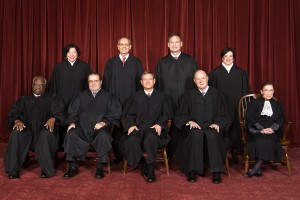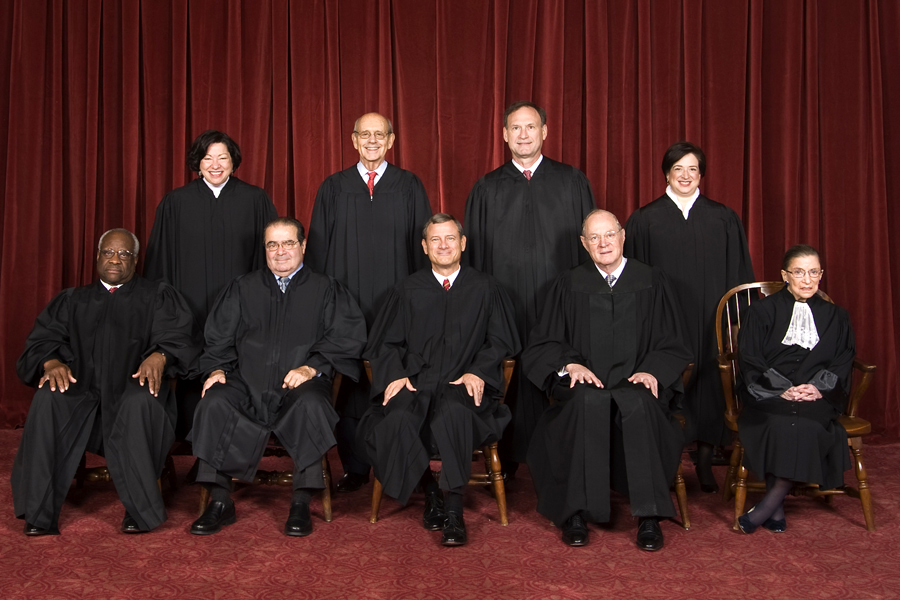
The Supreme Court in 2010.
As the U.S. Supreme Court prepares to hear oral arguments in the cases of two 14-year-olds sentenced to spend the rest of their lives in prison, many advocates and attorneys predict a majority of the justices will decide that life sentences for juveniles without the possibility of parole amounts to cruel and unusual punishment.
Children are “categorically different” from adults, says Andrea Dennis, associate professor at the University of Georgia School of Law, and she wants to see the Court acknowledge that.
“At a minimum,” she said, “I hope the court would reject mandatory juvenile LWOP [life without parole] sentences for all homicide crimes and require juries be allowed to consider the defendant’s youth and other factors as mitigation.”
In both cases, Jackson v. Hobbs and Miller v. Alabama, the sentences were mandatory regardless of the defendant’s age or circumstances and the judges had no discretion in sentencing.
In Jackson, a 14-year-old was convicted as an accomplice to the murder of a store clerk. He did not have a gun or pull the trigger. Miller involved a 14-year-old convicted of murder.
“It’s particularly troublesome when you can’t individualize the results,” said attorney Randee Waldman, director of the Barton Juvenile Defender Clinic at Emory University School of Law, in Atlanta. “Nobody is looking at the kids themselves.” But, she says she is “hopeful for a positive outcome” in the Supreme Court.
The appeal relies on previous decisions by the court, Roper v. Simmons and Graham v. Florida, which recognize children as developmentally different from adults. Advocates argue children are more likely to be rehabilitated because their brains do not fully develop until their early-20s.
“If children commit crimes they should be punished, but the sentence should reflect the fact that they are still developing,” said Melanie Velez, an attorney at the Southern Center for Human Rights (SCHR) in Atlanta.
But the difficulty for the courts has always been in determining when a child finishes developing and reaches maturity. In an article published in the Houston Law Review attorney and law professor Jonathan Todres writes about how society and the law tackle the question by dividing every life into two parts — childhood and adulthood.
“In reality,” Todres writes, “an individual does not cross this divide neatly at one point in time into adulthood and self-governance, but rather the law allows individuals to cross into adulthood for select activities while holding them back with respect to others,” such as voting or financial independence.
When the first juvenile courts were established in the early 20th century, he writes, “they were based on the recognition that children are different, have reduced culpability, and have greater likelihood of successful reform.”
Early on, juvenile court judges developed a system that was rehabilitative in nature, not punitive, but a rise in juvenile crime in the 1980s and 1990s lead to tougher measures and more legislation allowing children to be tried as adults for serious crimes.
Recently, the trend has started to reverse. In 2005, in the case of Roper v. Simmons, the Supreme Court ruled the death sentence was unconstitutional for juveniles, overturning a previous ruling allowing capital punishment for adolescents 16 and older. In 2010, the Court went further in Graham v. Florida, holding juveniles were only subject to life imprisonment in cases involving homicide.
“The inadequacy of penological theory to justify life without parole sentences for juvenile nonhomicide offenders, the limited culpability of such offenders, and the severity of these sentences all lead the Court to conclude that the sentencing practice at issue is cruel and unusual,” Justice Anthony Kennedy writes in the majority opinion for Graham v. Florida.
According to Velez, part of what makes a life sentence for children cruel and unusual are the prisons themselves. She says the Southern Center for Human Rights receives hundreds of letters about juveniles in prison every year.
“So much of what we hear about are the conditions in the prison,” she said. “Prisons are violent places and for individuals to serve life sentences is incredibly harsh. For children who commit crimes it would subject them to a very difficult life.”
But Waldman believes the sentence is cruel and unusual because of how rarely it is applied.
“There are very few 13 or 14-year-olds serving life without parole,” she said. “It’s disproportionately used. That’s why it is unusual.”
